With politicians from right to left putting their faith in higher walls, some Palestinians are putting their faith in higher powers.
Text and photos by: Ryan Rodrick Beiler/Activestills.org
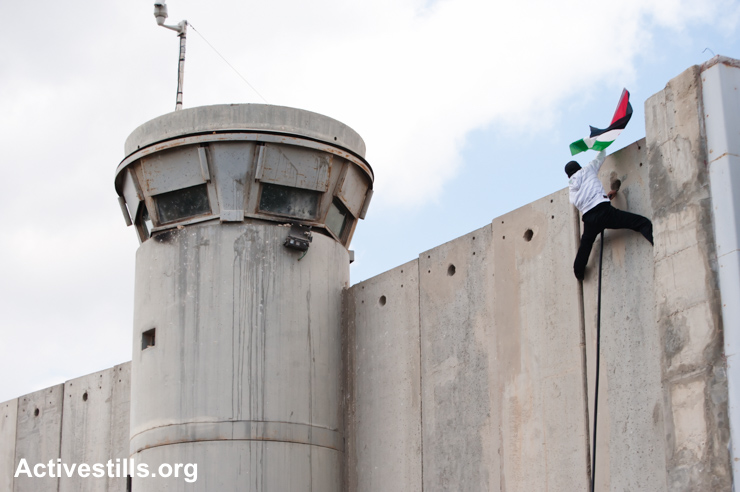
Just before his victory in the New Hampshire primary this past week, U.S. presidential candidate Donald Trump said: “We have to build a wall. Walls work. Just ask Israel. Walls work. They work.”
The same week, Israeli Prime Minister Benyamin Netanyahu announced the building of new barriers by saying: “In our neighborhood, we need to protect ourselves from wild beasts.”
If you’re tempted to dismiss these statements as the ravings of right-wing lunatics, here’s what Israeli Labor Party leader Isaac Herzog said recently: “I want to separate from as many Palestinians as possible, as fast as possible. Let’s build a large fence between us.”
That’s what passes for left-wing opposition in Israel.
Trump has also clumsily accused Hillary Clinton of hypocrisy for supporting Israel’s wall while taking a different approach in the U.S.
While a senator, Clinton co-sponsored a 2004 resolution supporting Israel’s barrier and the following year while touring the wall from inside the Israeli settlement Gilo said: “This is not against the Palestinian people. This is against the terrorists.”
I would like to introduce all of these politicians to my friend Ahmed (not his real name).
I met Ahmed at weekly nonviolent demonstrations against the wall that would cut his village off from its agricultural lands. I saw him arrested for nonviolently blocking the path of an Israeli “skunk truck”. Other members of his family have been jailed and tortured for their nonviolent activism.
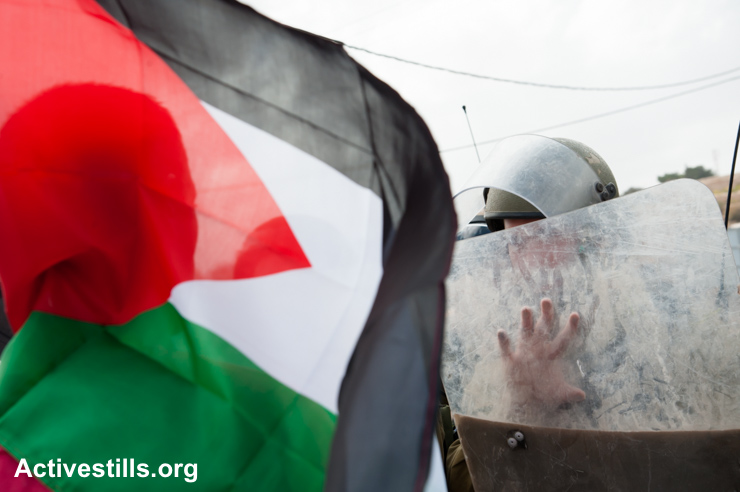
But some Fridays Ahmed would not be at the demonstration. That was because he, like thousands of other Palestinians in the West Bank, would sneak into Israel as an illegal worker and stay there for weeks at a time. Ahmed was engaged, and he was working to save money so that he could get married.
Trump said, “Walls work.”
Netanyahu said they keep out “wild beasts.”
Herzog said, slightly more politely, because he’s a leftist: “I want to separate from as many Palestinians as possible.”
Clinton said, “This is against the terrorists.”
Ahmed proves them all wrong. As long as people are desperate, they will find a way over, around, or through any wall.
On several occasions, activists have broken symbolic holes in the wall. In most cases, these breaches have gone completely unnoticed by Israeli forces until hours later. Any determined attacker could easily do the same.
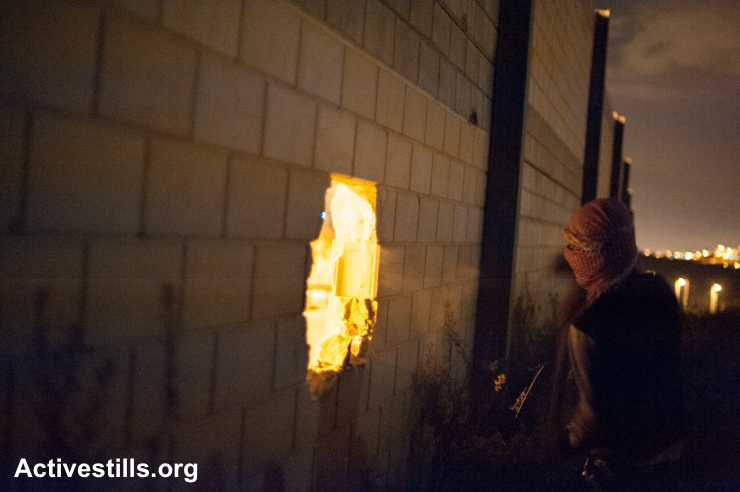
But most workers who enter Israel without permission simply pass through part of the 250 km of the wall’s 790-km route that has not yet been built. While Herzog and others talk about closing those gaps—at great expense and severe disruption of Palestinians living near its route—the wall’s security function remains a farce.
The rise in violence in Palestine and Israel over the past few months further demonstrates the Wall’s inability to provide security.
As of this week, Palestinians have killed 27 Israelis since October. During the same time, Israeli forces have killed at least 176 Palestinians.
Some of the assaults inside Israel were carried out by West Bank Palestinians who crossed the barrier. But in many cases, Palestinian citizens of Israel or Palestinian residents of Jerusalem, attacked Jewish Israelis who live on the same side of the wall as they do.
But it is a mistake to focus only on episodes of Palestinian violence. The wall is itself just one of many examples of Israel’s structural violence that affects every single Palestinian every single day. It’s just one example of the difference in power between between Israelis and Palestinians that explains why whenever there is a spike in violence, many more Palestinians die. In recent months, at least a third of the Palestinians killed by Israeli forces were shot during clashes and protests—not while attacking civilians.
As long as Israel’s oppression of Palestinians continues, there will be violence—systemic violence from Israelis and desperate acts of resistance by Palestinians.
Walls will not stop it. Walls cannot provide security. They can only provide, as Michael Schaeffer Omer-Man so aptly calls it: “security theater.”
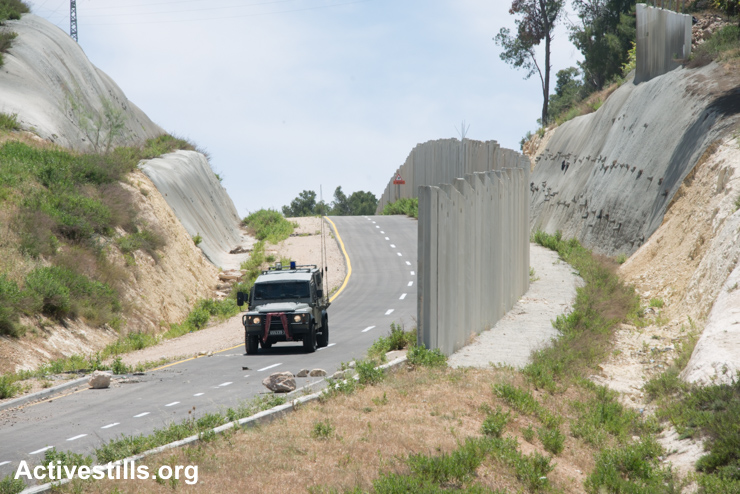
But behind the scenes of “security theater” the fundamental function of the Israeli wall is obvious to those whose land it devours. While Israel has always insisted that the barrier is not a border, now even opposition politicians like Herzog are calling for residency status to be determined by the barrier’s path—rather than the previously unilaterally imposed municipal boundaries. This would revoke the Jerusalem residency rights of 100,000 Palestinians—meaning they would no longer have the right to enter Jerusalem or Israel but would be confined to the West Bank.
This is just one example of how the barrier, contrary to widespread perception, never separated Israel from Palestine. The wall does function in many places to separate Palestinians from Israelis. But this is because it was built to surround many of the settlements that Israel built on occupied Palestinian land in violation of international law.
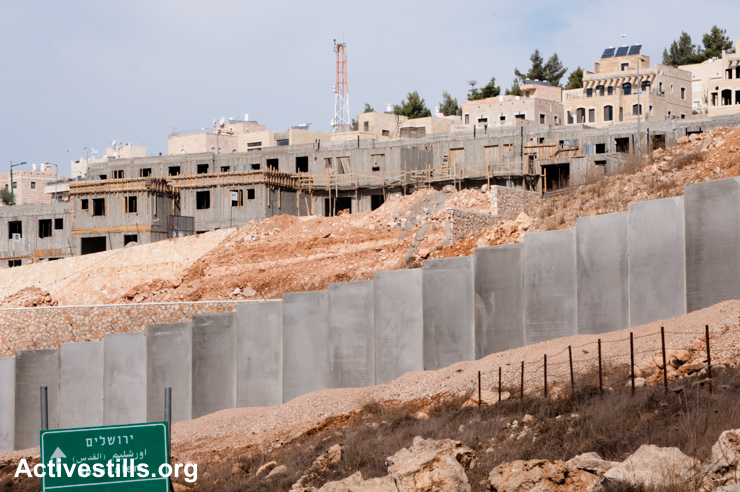
Some 85 percent of the barrier’s route lies not on the internationally recognized boundary between the West Bank and Israel, but inside the West Bank on Palestinian land—effectively annexing 10 percent of it. That is why the International Court of Justice declared the wall illegal in 2004.
One of the remaining gaps in the wall lies near the West Bank town of Beit Jala. There, the wall would connect the Israeli settlements Gilo and Har Gilo and allow them to continue expanding into Palestinian territory.
A historically Christian village, Beit Jala’s Catholic priests have led prayer vigils against the construction of the wall since 2011 as the community has continued to fight legal battles to change its route.
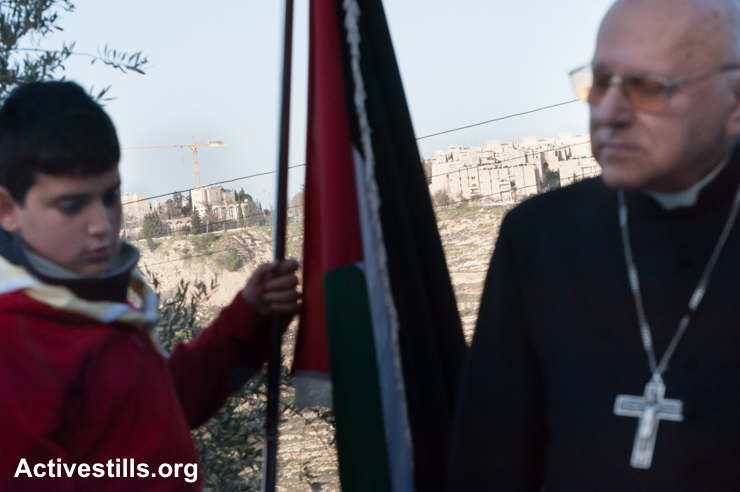
Several other Palestinian communities have succeeded in winning court cases to change the route of the wall. In each case, this returned some (but never all) of their land to their side of the barrier.
In Beit Jala, the original route of the wall would have completely cut off the Cremisan Salesian monastery and convent from the rest of the community. After years of legal struggle and prayerful protest, the community won its own minor victory: Israel’s High Court of Justice ruled that the monastery and convent must remain accessible. However, the final route has not yet been presented by the military, which began uprooting olive trees and bulldozing agricultural lands last summer to clear a path for the wall.
Last month, the Israeli High Court rejected a petition by the convent and Beit Jala landowners demanding that the military reveal the wall’s route before proceeding with construction. According to the Society of St. Yves, a Catholic legal aid organization which represents the nuns, the court re-affirmed that the wall is being built for “security needs.”
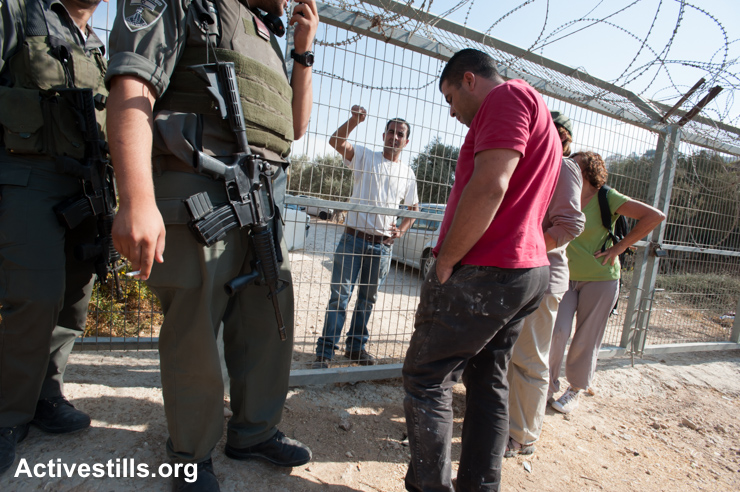
With little hope in the courts or right- and left-wing political leaders, Beit Jala’s believers continue to make their ultimate appeal to higher powers.
At one of the prayer vigils, Johnny Shawan, a local Lutheran priest who owns land in the barrier’s path, recalled attending Bible college in Germany in 1989. He offered this prayer:
The walls of Berlin fell down without bloodshed. God, I want to see this history repeated even in our town. … That the walls of hatred and separation would fall down. That one day we’ll see no walls between Israeli Jews and the Palestinians. We feel as the body of Christ that we are one because he made us one. He is the Prince of Peace who took [away] the separation wall. He will take this wall away.
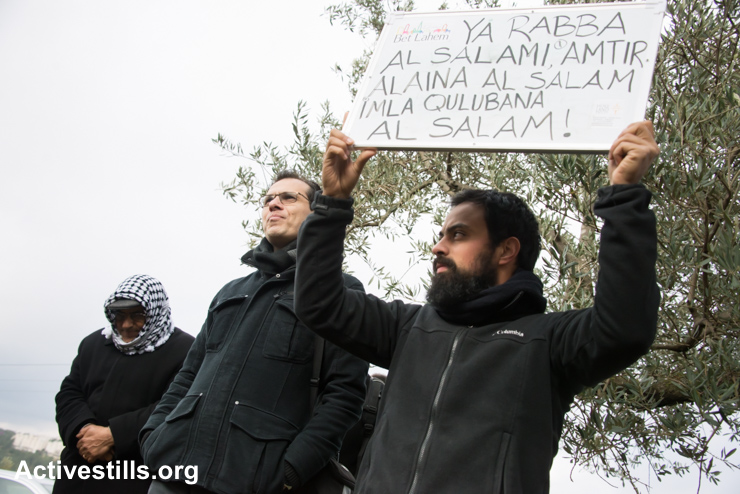
This article was adapted from remarks given at the launch of a photo exhibition titled “Prayer Against the Wall”, on display in Kampen Church, Oslo, Norway from Feb. 10 – March 27, 2016.

